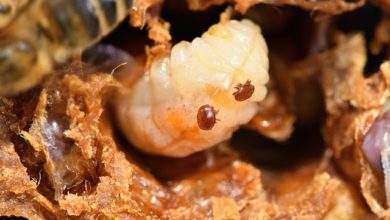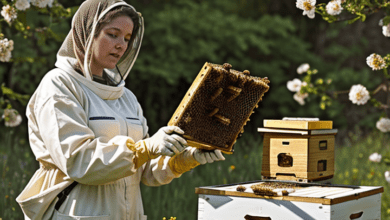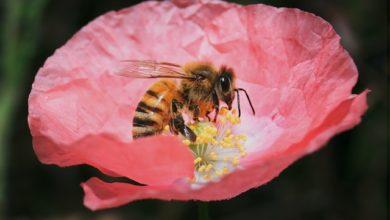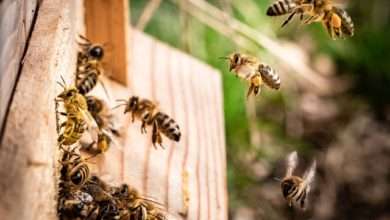Preparing Protein Patties for Winter Feeding of Bees
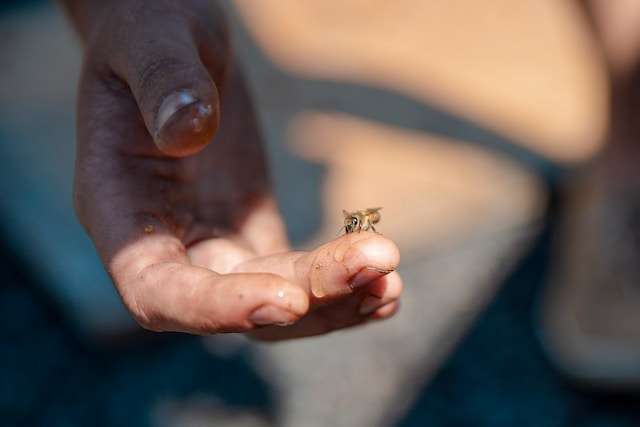
Winter Feeding for Bees – The Importance of Protein Patties
As winter approaches, beekeepers must take special care to ensure the survival and well-being of their colonies. One crucial aspect of this care revolves around winter feeding.
In this article, we will explore the importance of winter feeding for bees and specifically highlight the benefits of protein patties in supporting the health and vitality of honeybee colonies during this critical season.
Benefits of Protein Patties
Winter is a challenging time for bees, as they experience a lack of available nectar and pollen from flowers. Protein patties, also known as pollen substitute patties, have emerged as a valuable nutritional supplement for bees during this period. Let’s delve into some of the benefits these patties provide:
1. Essential Nutritional Support:
Protein patties serve as an excellent source of essential nutrients, including amino acids, lipids, vitamins, and minerals. These supplements play a vital role in sustaining the overall health and development of bees during winter when their natural food sources are scarce. By providing bees with a well-rounded diet, protein patties help bolster their immune systems, increasing their ability to resist common diseases and pests.
2. Stimulating Brood Production:
Maintaining a healthy brood population is crucial for the survival of a bee colony. Protein patties simulate the availability of pollen, inducing brood rearing even during the colder months.
Increased brood production ensures a robust workforce for the colony, essential for tasks such as foraging, hive maintenance, and thermoregulation.
3. Supporting Queen Performance:
The health and productivity of the queen bee directly impact the success of the entire colony. Protein patties supply the queen with the necessary nutrients to maintain her vitality and enhance her egg-laying capacity. Adequate protein intake ensures the development of healthy larvae, contributing to the overall strength of the hive.
Overview of the Process:
Now that we understand the benefits protein patties offer to bees during winter, let’s explore how to utilize this resource effectively:
- Timing: Proper timing is critical for winter feeding. It is generally recommended to commence protein patty supplementation when the natural pollen supply becomes limited or depleted. This typically occurs in late fall or early winter, ensuring the colony is equipped to overcome the scarcity of food resources.
- Preparation: Ensure that the protein patties you provide contain a balanced combination of ingredients that mimic the nutritional composition of pollen. This might include soy flour, yeast, brewer’s yeast, essential amino acids, vitamins, and minerals. Follow established recipes or consult with local beekeeping associations to ensure the correct formulation.
- Placement: Protein patties should be placed near the brood nest, encouraging easy access for the worker bees. Monitoring the consumption and adjusting the quantity of patties accordingly is essential to prevent wastage or undernutrition.
- Monitoring and Adjustments: Regularly inspect the hive during the winter months to assess the impact of the protein patties. Observe the population size, brood production, and overall vitality of the colony. Adjust the feeding regimen if needed, to ensure optimum support for the bees.
Ensuring Vital Nutrition During the Cold Months
One crucial aspect of beekeeping during the winter season is providing adequate nutrition to the colonies. Winter feeding plays a vital role in ensuring the health and survival of bees, as it helps replenish their energy stores and sustains them through the long winter months.
The Significance of Winter Feeding
1. Nourishing Collated Colonies:
- Bees rely on stored food reserves, such as honey and pollen, during the winter.
- Proper nutrition sustains the bees, allowing them to generate heat and maintain the hive’s temperature.
- Adequate feeding reduces the risk of starvation, ensuring the survival of the colony until spring.
2. Supporting Brood Rearing:
- Bee colonies need protein-rich food for brood rearing, especially during winter when fresh pollen sources are scarce.
- Providing protein patties supplements the bees’ diet, enabling them to rear healthy broods and maintain population stability.
- A thriving population enhances the colony’s ability to survive threats, such as pests, diseases, and queen failure.
Ingredients for Protein Patties
Protein Sources:
- Soy Flour: A readily available and economical source of protein commonly used in bee feed. It is best to use Organic, as many soy products now contain GMO ingredients.
- Pollen Substitute Pellets: Formulated with essential amino acids and vitamins to mimic natural pollen.
- Brewer’s Yeast: Contains valuable nutrients, notably B vitamins, crucial for bee health.
Sweetener Options:
- Granulated Sugar: The most common sweetener used due to its affordability and accessibility.
- Agave nectar: Agave’s mild flavor makes it a great sweetener, better than high fructose corn syrup (which may have GMO ingredients).
- Fondant: A solid form of sugar that provides bees with a readily available energy source.
Other Additives:
- Probiotics: Beneficial bacteria that support bee gut health and aid in digestion.
- Essential Oils: Natural extracts, like lemongrass or spearmint, that can enhance patty palatability and stimulate feeding.
- Vitamins and Minerals: Supplemental nutrients necessary for overall bee health and vitality.
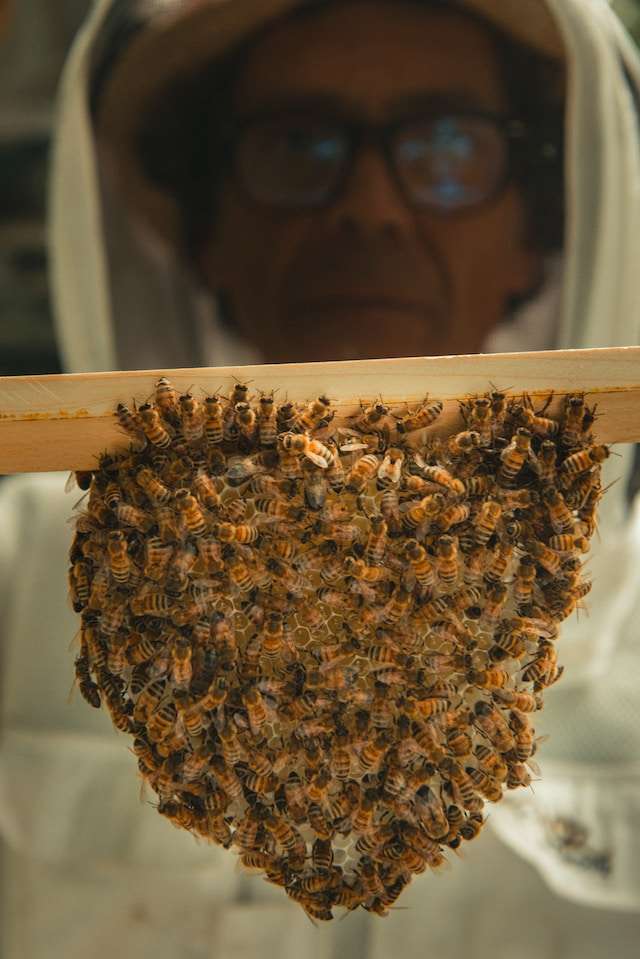
Necessary Equipment:
- Mixing Bowl and Spoon: Essential for combining the ingredients and creating a uniform protein patty mixture.
- Measuring Tools: Accurate measuring of ingredients ensures the proper nutritional balance in the protein patties.
- Plastic Wrap or Wax Paper: Ideal for wrapping and storing the prepared protein patties.
Making the Protein Patties
Here is the process of making protein patties for winter feeding of bees, ensuring their survival and well-being during this challenging season.
1.Mixing the Ingredients
To prepare these nutritious protein patties, you will need a few essential ingredients. The key components include:
- Protein Source: Begin by selecting a suitable protein source, such as soy flour or pollen substitute, which will provide the necessary nutrients for the bees. Ensure that the protein source is of high quality to promote bee health.
- Sweetener: Adding a sweetener like sugar or Agave nectar to the mixture not only enhances palatability but also provides an extra energy boost for the bees.
- Other Additives: Consider including other beneficial additives such as vitamins, minerals, and essential oils to further enhance the patty’s nutritional value. These additional elements can strengthen the bees’ immune system and improve their overall well-being.
Once you have gathered the ingredients, mix them thoroughly in a large bowl. Ensure an even distribution of all components to create a balanced protein patty.
2. Shaping the Patties
After the ingredients have been combined, it’s time to shape the protein patties. Here’s how you can do it:
- Portioning: Divide the mixture into small portions, typically about the size of a hockey puck. This sizing allows for easy placement in the hive and consumption by the bees.
- Shaping: Take each portion and shape it into a round patty, approximately half an inch thick. A uniform shape ensures consistent feeding and prevents any difficulties for the bees when consuming the patties.
3. Storage and Preservation
Proper storage and preservation of the protein patties are crucial to maintain their nutritional value. Follow these guidelines for optimal storage:
- Freezing: As protein patties are generally made in large quantities, freezing them is a practical way to preserve freshness. Place the patties in airtight containers or sealable freezer bags. Ensure you label them with the date of preparation for easy identification.
- Temperature and Moisture Control: Store the frozen protein patties in a freezer set at or below °F (-18°C) to prevent spoilage. Avoid exposing them to excessive moisture, as it may compromise their integrity or promote the growth of mold.
4. Quantity Needed
Determining the appropriate quantity of protein patties for winter feeding depends on several factors:
- Colony Size: Consider the size and strength of your bee colony. A larger colony will generally require more protein patties to sustain them through the winter.
- Climate Conditions: Assess the local weather conditions during winter, as colder temperatures might restrict the bees’ foraging abilities. In harsher climates, it is advisable to provide a more substantial supply of protein patties.
- Assessment and Observation: Regularly monitor your beehive’s food stores throughout the winter months. Adjust the amount of protein patties provided based on the bees’ consumption and overall colony health.
Always remember that every colony is unique, and it is important to adapt the quantity and frequency of protein patty supplementation based on your specific hive’s needs.
Winter Feeding of Bees
Now, we will explore the various aspects of winter feeding for bees, including timing, placement of patties, monitoring bee activity, and additional feeding options.
- Timing
Timing is crucial when it comes to winter feeding. It is recommended to start feeding your bees in late fall before the winter chill takes hold. Generally, beekeepers provide supplementary food when temperatures consistently fall below 50°F (10°C).
By initiating feeding during this period, you can ensure that your bees have ample time to store enough food for the upcoming winter months.
- Placement of Patties
One common method of winter feeding is the use of sugar patties or fondant. These solid food sources supply bees with the necessary carbohydrates and energy to survive. When placing patties, it is important to consider accessibility for the bees. They should be placed close to the brood nest, which is the center of bee activity during the winter.
By positioning the patties nearby, you provide easy access for the bees, enabling them to consume the nutrients efficiently.
- Monitoring Bee Activity
Monitoring bee activity during the winter months is crucial to ensure your colonies are thriving. Occasionally, you should take a quick peek into the hive to check their food reserves. By carefully lifting the lid, you can observe the food stores without disturbing the bees significantly.
Ideally, their food reserves should be sufficient, stored close to the cluster where bees generate warmth. If you find the food stores running low, consider providing additional feeding to prevent starvation.
- Additional Winter Feeding Options
In addition to sugar patties, beekeepers have several other options for feeding bees during winter.
- Candy Boards: Candy boards are essentially solid sugar cakes placed above the frames to provide a slow-release food source. Made by mixing granulated sugar with water and heating it to the candy stage, this method allows bees to access the sugar as needed, reducing the risk of excess moisture build-up.
- Dry Sugar Feeding: Dry sugar feeding involves placing a layer of granulated sugar directly on top of the frames or on a moisture-absorbing material like newspaper. Bees can consume the sugar as needed. This method is suitable for regions with low humidity where excess moisture is less of a concern.
Conclusion
The preparation of protein patties for winter feeding of bees is a crucial practice that contributes significantly to the health and wellbeing of bee colonies during the cold winter months. By understanding the importance of this practice and following the steps outlined in this article, beekeepers can effectively provide their bees with the nutrition they need to thrive.
As we continue to prioritize the welfare of our bees, it becomes clear that the preparation of protein patties is an essential component of responsible beekeeping.
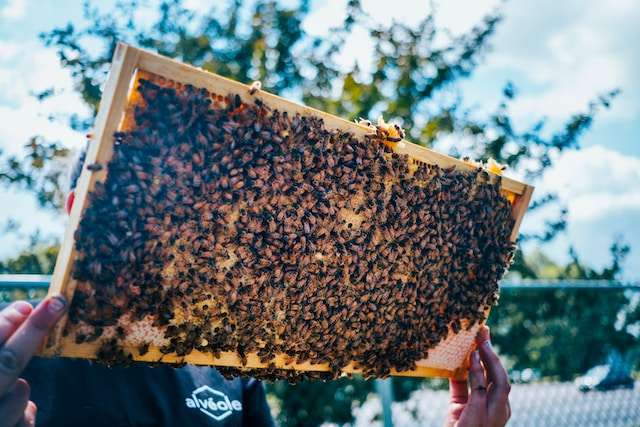
FAQ:
What is the purpose of feeding protein patties to bees during winter?
- Protein patties serve as an essential supplement for bees during winter when their natural sources of pollen are scarce. These patties provide bees with the necessary protein, vitamins, and nutrients they need to maintain their health and support brood rearing.
How should protein patties be stored?
- Protein patties should be stored in a cool, dry place to preserve their integrity and prevent spoilage.
- When should protein patties be placed in the hive?
- Protein patties should be placed in the hive before the onset of winter to ensure that bees have access to the supplemental nutrition when they need it most.
How do protein patties contribute to the overall well-being of honeybee colonies?
- Protein patties are particularly beneficial for bees in winter as they aid in stimulating brood production. This boosts the colony’s population, strengthens their immune systems, and enhances their chances of surviving the colder months.
- These patties also support the development of healthy and robust bees that can readily gather nectar and pollen when spring arrives.
How often should I feed my bees protein patties?
- It is recommended to start feeding protein patties to your bees in late fall, around September or October, depending on your specific climate. Monitor the colony’s consumption and replenish the patties as needed, ensuring they have access to a sufficient supply until natural pollen sources become available in spring.
Where can I purchase protein patties for winter feeding?
- Protein patties specifically formulated for winter feeding can be purchased from reputable beekeeping supply stores, online retailers, or local beekeeping associations. Ensure you select high-quality patties that contain a balanced blend of protein sources and essential nutrients.
Do protein patties replace natural pollen sources entirely?
- Protein patties should not be considered a complete replacement for natural pollen sources. They are meant to supplement the bees’ diet, especially during times when pollen is scarce. It is essential to encourage a diverse foraging environment and provide access to natural pollen whenever possible.
